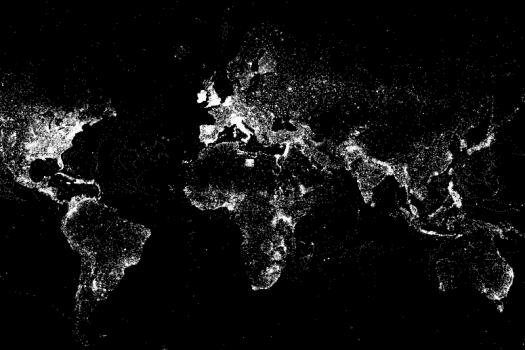z. Engineering a World without Light Pollution
- Lesson Plan
- Video
- Feedback Form
Learn about artificial light at night and then use your science, design and engineering skills to engineer a world without light pollution!
This lesson can be done by many age groups. It will work best for students grades 3-8.
Materials needed
For the activity, you can either use a flashlight or a lamp. If possible, remove the cover over the bulb on the flashlight or lamp. If you can not remove the cover, you can still do the activity.
Grab a variety of materials– recycled works great, to have on hand for your design. You will want to have tape as well. Good materials are paperboard (cereal box), plastic (recycled containers), aluminum foil, etc.
Do the activity in the room you can make the darkest in your house. Having a dark room will help you see how your model worked.
Directions
· Start by watching some introductory videos on the video tab. See tab above.
· You can also discover more about dark sky preservation through the interactive dark sky preservation for kids section of the web portal.
· Another fun thing to do is to explore the world light pollution map. Check out where you live compared to some of your favorite places to visit. How are the light pollution levels? Put in Great Basin National Park. How dark is it there?
· Through the videos and the website exploration you will have learned the main problems with light pollution (wasted energy, losing the ability to view the Cosmos, animal’s needs for darkness, and human health concerns).
· But communities can combat light pollution quite easily.
Þ Communities can decide to only light areas that need light at night.
Þ In areas where communities choose to create light at night they can do this in smarter and more efficient ways.
· Now you will become an engineer and design your own light shield that will provide for dark sky preservation.
· First start by testing your flashlight or lamp with the light shield removed in your dark location. How much light does it give off? Where does the light go?
· Now think about where you want the light to go. You will be designing a light shield that should provide light for pedestrians while preserving dark skies for animals, celestial viewing, and human health.
· If you like, start by sketching a design– see the next page for a Lab sheet– then try making the design you sketched.
· Test your design in the dark with your light on. Did it work the way you wanted? Can you improve your design?
· If so try again.
· Which design worked best? Why? Which design used the least amount of resources? Can you think of constraints engineers would have in the real world with their designs?
Send us a picture of your best design or of your design process!
Email to greatbasinobservatory@gmail.com
· Go Further: Check out your neighborhood at night. Drive around with your family looking for examples of good and bad lighting. How would you retrofit the bad lighting if you could? Can you change any lighting at your own house to be dark-sky friendly?
Become a citizen scientist! You can easily participate in Globe at Night to help track your community's light pollution. People are tracking light pollution levels on all continents on Earth!
| Attachment | Size |
|---|---|
| 136.9 KB |

